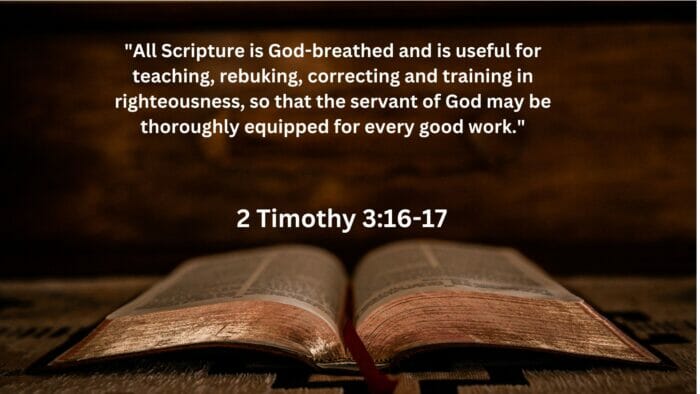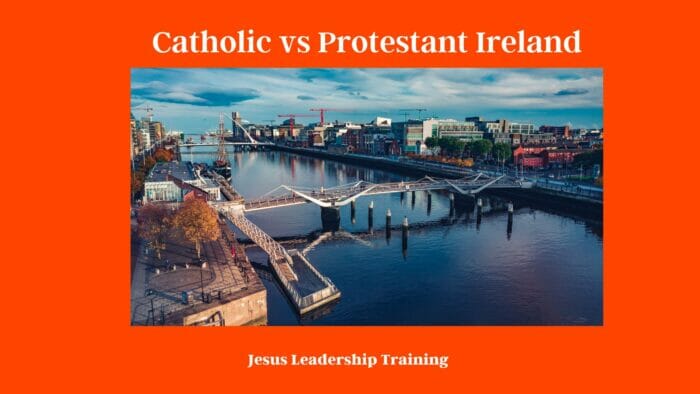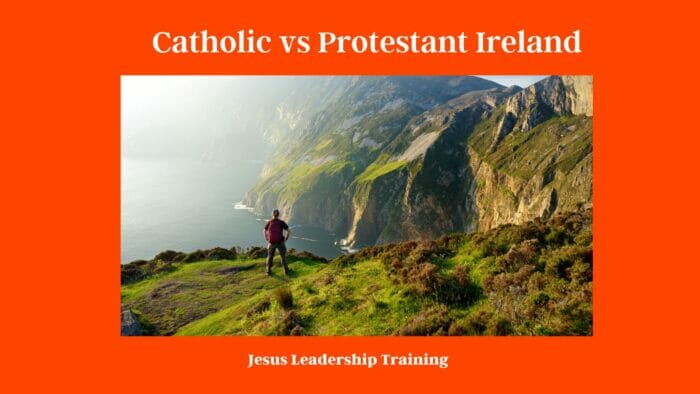Catholic vs Protestant Ireland – Dive deep into the intricate and intriguing story of Catholic and Protestant Ireland. From their respective meanings and beliefs to the Troubles that shook the region, this comprehensive review illuminates this complex part of Irish history.
Table of Contents
Meaning of Catholic in Ireland
Irish Catholic Beliefs
The Irish Catholics adhere to a branch of Christianity led by the Pope, based in Rome. They believe in the Holy Trinity and the sacraments like Baptism, Eucharist, and Confirmation. Irish Catholicism is deeply rooted in the local culture, with distinct practices like the celebration of St. Patrick’s Day and pilgrimages to holy sites like Croagh Patrick.
The Roman Catholic faith has been a significant part of Irish history, shaping much of the country’s culture and traditions. Here are some core beliefs of Irish Catholics:
- Trinity: Irish Catholics, like all Catholics worldwide, believe in the Holy Trinity, which comprises God the Father, God the Son (Jesus Christ), and God the Holy Spirit.
- Eucharist: The sacrament of the Holy Eucharist, which involves the consecration of bread and wine that become the Body and Blood of Jesus Christ, is a central part of the Catholic Mass. Irish Catholics hold firm to the belief in the real presence of Christ in the Eucharist.
- Mary and the Saints: Irish Catholics traditionally have had a strong devotion to the Virgin Mary and the saints. They believe these holy figures can intercede with God on their behalf.
- Seven Sacraments: Irish Catholics adhere to the seven sacraments of Baptism, Confirmation, Eucharist, Penance (Confession), Anointing of the Sick, Holy Orders, and Matrimony.
- Papal Authority: The Pope, as the Bishop of Rome, is regarded as the visible head of the Church on earth and the successor of Saint Peter. His teachings, particularly when spoken ‘ex cathedra’ (from the chair of Saint Peter), are considered infallible.
- Prayer: Prayer, including personal prayer, the use of the Rosary, and communal worship, is a central part of Irish Catholic life. The tradition of praying for the dead is also deeply ingrained in Irish Catholicism.
- Social Justice: Irish Catholics believe in the importance of social justice, following the teachings of Jesus to love one’s neighbor and care for the poor and marginalized.
- Afterlife: Irish Catholics hold firm belief in the afterlife, including the concepts of heaven, hell, and purgatory. They believe that one’s actions in this life will determine their fate in the next.
- Relics and Pilgrimage: Many Irish Catholics engage in pilgrimage practices, such as traveling to holy sites like Knock and Lough Derg. Reverence for holy relics is also a part of Irish Catholic tradition.
- Lent and Advent: The observance of the seasons of Lent and Advent, including fasting, prayer, and acts of charity, are significant in the religious calendar of Irish Catholics.
These beliefs form the spiritual foundation for many Irish Catholics. However, like any religious group, beliefs can vary among individuals based on personal experiences and interpretations.
Irish Religion before Christianity
Before Christianity arrived in Ireland, the Irish followed a form of polytheistic religion known as Celtic paganism. They worshipped various deities associated with natural elements, maintained sacred groves, and practiced rituals that highlighted their deep connection with nature.

Celtic Paganism
Celtic Paganism was a highly spiritual belief system that centered around the reverence of nature and its forces. The Druids, Celtic priests, were esteemed as the spiritual guides who performed religious ceremonies and interpreted omens. This form of paganism was the dominant belief system before the arrival of Christianity in the 5th century.
here is a table presenting the fundamental beliefs of Celtic Paganism:
| Belief | Description |
|---|---|
| Animism | Celtic Pagans believe that all elements of nature – including plants, animals, and inanimate objects like rocks – have spirits or souls. |
| Polytheism | They worship a pantheon of deities, each with their specific domain. Key figures include the Dagda, Brigid, Lugh, and Morrigan. |
| Nature Worship | The natural world is revered and celebrated in Celtic Paganism, with many rituals and festivals aligned with natural events like solstices and equinoxes. |
| Ancestor Reverence | Celtic Pagans often honor their ancestors, believing they can offer guidance and protection. |
| Sacred Spaces | They believe that certain places, like groves, springs, and rivers, are especially sacred. These are often used as places of worship. |
| Cycle of Life, Death, and Rebirth | There is a strong belief in the cycle of life, death, and rebirth. Many Celtic Pagans believe in reincarnation. |
| Heroic Ethos | The stories and values from Celtic mythology, which often feature heroic feats and quests, play a significant role in Celtic Pagan ethics. |
| Divination | Celtic Pagans often use methods of divination, such as reading Ogham staves or engaging in meditation to gain insight into the future. |
| Festivals | The Celtic Wheel of the Year includes four fire festivals (Samhain, Imbolc, Beltane, and Lughnasadh) and solstices and equinoxes, which are all key times for rituals and celebrations. |
Please note that the term “Celtic Paganism” is broad and encompasses a range of beliefs and practices that can vary widely among individual practitioners and groups. This table provides a broad overview but does not capture all variations and nuances of belief within Celtic Paganism.
Meaning of Protestant in Ireland
Are Irish Protestants Really Irish?
Irish Protestants are indeed Irish, but they have a distinct culture and history from their Catholic counterparts. Many descend from Scottish and English settlers who arrived during the Plantation of Ulster in the 17th century. Despite their different roots, they have contributed significantly to the shaping of Irish society.
Persecution of Protestants in Ireland
During different periods in Irish history, Protestants faced discrimination and persecution, particularly during the Irish Rebellion of 1641 and the Penal Laws’ enforcement in the 18th century. These experiences shaped their identity and contributed to the deep-seated divisions that later culminated in the Troubles.
Percentage of Protestants in the Republic of Ireland
The percentage of Protestants in the Republic of Ireland is relatively small. According to the 2016 Census, approximately 4.2% of the Irish population identified as Protestant.
Why do Catholic and Protestant Fight in Ireland?
What Caused the Troubles?
The Troubles, a three-decade conflict from the late 1960s to 1998, resulted from long-standing political and sectarian tensions between the largely Catholic nationalists, who desired a united Ireland, and the predominantly Protestant unionists, who wanted Northern Ireland to remain part of the United Kingdom.

Here’s a table that outlines the main causes of the conflicts between Irish Catholics and Protestants, often referred to as “The Troubles”:
| Cause | Description |
|---|---|
| Religious Differences | The core of the conflict has its roots in the religious division between Protestants (mainly aligned with Unionism and loyalty to the British Crown) and Catholics (mainly aligned with Irish Nationalism and a desire for Irish independence). |
| Political Control and Self-Determination | There has been a longstanding conflict over whether Northern Ireland should remain part of the United Kingdom or become part of a united Ireland. This has resulted in a political struggle for control. |
| Economic Inequality | Historically, there was significant economic and social inequality between Catholics and Protestants in Northern Ireland, with Catholics often at a disadvantage. This fuelled resentment and tension. |
| Discrimination and Segregation | Discrimination in housing, employment, and civil rights was common against Catholics in the mid-20th century. Segregation has been a pervasive issue, with Catholic and Protestant communities often living separately. |
| Legacy of Violence and Retribution | The cycle of violence and retribution became a cause in itself, with acts of violence leading to retaliation and a perpetuation of the conflict. |
| British Military Presence | The deployment of British troops and their actions (such as internment without trial) were seen as oppressive by many Catholics, escalating the conflict. |
| Paramilitary Groups | The emergence and actions of paramilitary groups on both sides (like the IRA and UVF) intensified the conflict and fuelled fear and tension. |
Remember, the conflict is a complex issue with deep historical roots, encompassing religious, social, political, and cultural dimensions. The causes are intertwined and have evolved over time. This table provides a simplified summary of the key causes but does not capture the full complexity of the conflict.
Who Won the Troubles?
The Troubles ended with the Good Friday Agreement of 1998, which did not declare a victor. Instead, it provided a framework for power-sharing and cooperation between nationalists and unionists. While it did not fully resolve all disagreements, it marked a significant step towards peace and reconciliation.
Who were the IRA?
The Irish Republican Army (IRA) was an armed nationalist organization seeking to end British rule in Northern Ireland and achieve Irish reunification. Known for their armed campaigns during the Troubles, they officially disarmed in 2005.
table explaining key aspects of the Irish Republican Army (IRA):
| Aspect | Description |
|---|---|
| Origins | The IRA originated from the Irish Volunteers, a group founded in 1913 that played a central role in the Easter Rising of 1916. |
| Goals | The primary aim of the IRA has been to end British rule in Northern Ireland in order to create a united Ireland. |
| Methodology | The IRA is known for its use of armed force including bombings, assassinations, and guerrilla warfare tactics. |
| Splinter Groups | Various factions have split from the original IRA, including the Provisional IRA (PIRA), which was the most active during the Troubles, and the Real IRA (RIRA), known for the Omagh bombing in 1998. |
| Ceasefires and Disarmament | The PIRA declared ceasefires in 1994 and 1997, and in 2005 it formally ended its armed campaign and disposed of much of its weaponry. |
Here is a simplified timeline highlighting some key events related to the IRA:
| Year | Event |
|---|---|
| 1916 | Members of the Irish Volunteers participate in the Easter Rising. |
| 1919-1921 | The IRA fights the Irish War of Independence against British forces. |
| 1922-1923 | The IRA splits over the Anglo-Irish Treaty, leading to the Irish Civil War. |
| 1969 | The IRA splits into the Official IRA (OIRA) and the Provisional IRA (PIRA). The PIRA would go on to be the most active during The Troubles. |
| 1971 | The PIRA initiates a bombing campaign in Northern Ireland. |
| 1981 | Ten PIRA prisoners die in a hunger strike, attracting international attention. |
| 1994 | The PIRA declares a ceasefire, which is briefly broken in 1996 before being reinstated in 1997. |
| 1998 | The Good Friday Agreement is signed; however, some dissident groups such as the Real IRA continue to engage in violent actions. |
| 2005 | The PIRA formally ends its armed campaign and begins decommissioning weapons. |
| Present | Some dissident groups continue to carry out attacks, but the scale and intensity are significantly reduced compared to the height of The Troubles. |
As with the previous tables, this provides an overview but does not cover all aspects of the IRA’s long and complex history.
What Ended the Irish Troubles?
How Many People Died?
Approximately 3,500 people died during the Troubles, including civilians, paramilitary members, and security forces. The majority of these deaths occurred in Northern Ireland, although violence also spread to other parts of the UK and the Republic of Ireland.
How Did the Irish Troubles End?
The Good Friday Agreement, also known as the Belfast Agreement, signed on April 10, 1998, effectively ended the Troubles. This historic accord established a devolved inclusive power-sharing administration and laid the groundwork for a peaceful and prosperous Northern Ireland.

Conflict Today
While the Good Friday Agreement ended large-scale violence, sporadic unrest and political tension remain, particularly around issues like Brexit and its implications for the Irish border. Peaceful dialogue and ongoing reconciliation efforts continue to be crucial for lasting peace.
What Caused the Troubles in Northern Ireland?
table of major facts about “The Troubles”:
| Fact | Description |
|---|---|
| Duration | The Troubles lasted approximately from 1968 to 1998, culminating in the Good Friday Agreement. |
| Main Parties | The conflict primarily involved Irish Nationalists/Catholics (who generally wanted a united Ireland) and Unionists/Protestants (who generally wanted to remain part of the UK). The British state and various paramilitary groups were also key actors. |
| Casualties | It’s estimated that about 3,500 people were killed and up to 50,000 injured during The Troubles. |
| Paramilitary Groups | Notable paramilitary groups include the Irish Republican Army (IRA), the Provisional Irish Republican Army (PIRA), the Ulster Volunteer Force (UVF), and the Ulster Defense Association (UDA). |
| Internment | From 1971, the British government implemented a policy of internment without trial, largely targeting the Nationalist/Catholic community. This policy was highly controversial and exacerbated the conflict. |
| Bloody Sunday | On January 30, 1972, British soldiers shot 28 unarmed civilians during a protest march in Derry, leading to a significant escalation in the conflict. |
| Hunger Strikes | In 1981, a series of hunger strikes led by Bobby Sands brought international attention to the conflict. Sands died after 66 days, becoming one of 10 prisoners who died during the strikes. |
Here’s a simplified timeline highlighting some of the key events of “The Troubles”:
| Year | Event |
|---|---|
| 1968 | Civil rights marches begin in Northern Ireland, sparking widespread unrest. |
| 1969 | British troops are deployed in Northern Ireland to quell the escalating violence. |
| 1971 | The British government implements a policy of internment without trial. |
| 1972 | “Bloody Sunday” occurs, leading to a significant escalation in violence. |
| 1974 | The Dublin and Monaghan bombings, the single deadliest attack during The Troubles, are carried out by loyalist paramilitaries. |
| 1981 | The hunger strikes led by Bobby Sands take place. |
| 1985 | The Anglo-Irish Agreement is signed, giving the Irish government an advisory role in Northern Ireland’s government while confirming that Northern Ireland would remain part of the United Kingdom unless a majority of Northern Irish citizens agreed to join a united Ireland. |
| 1998 | The Good Friday Agreement (also known as the Belfast Agreement) is signed, marking an end to most of the violence. |
| Present | Tensions and occasional violence persist, but the scale and intensity of conflict are significantly reduced compared to the height of The Troubles. |
Again, remember that the conflict and its history are complex and multifaceted. These tables provide an overview of some of the key facts and events but do not encompass the full depth and nuance of “The Troubles”.
Conflict Summary
The root cause of the Troubles lay in the sectarian division between the Catholic minority, who identified as Irish nationalists, and the Protestant majority, who identified as British unionists. Deep-seated issues of discrimination, cultural identity, and national sovereignty came to a head, resulting in a violent conflict.
Impact
The impact of the Troubles was profound, shaping Northern Ireland’s political landscape and leaving a lasting legacy. Besides the tragic loss of life, the conflict affected the economy, infrastructure, and the psyche of the people, with consequences still felt today.
Final Thoughts on Catholic vs Protestant Ireland
The history of Catholic and Protestant Ireland is a complex and emotional tapestry woven from threads of religion, identity, and politics. Understanding this history is crucial to appreciate the progress made and the challenges that still lie ahead. As we reflect on the story of Catholic vs Protestant Ireland, we are reminded of the power of dialogue and reconciliation in bridging divides and forging a peaceful future.

FAQs
- When did the conflict between Catholics and Protestants in Ireland start? The conflict has deep roots in Ireland’s history, particularly stemming from the 17th-century Plantation of Ulster. However, the most recent and intense phase known as the Troubles started in the late 1960s.
- What’s the difference between Catholic and Protestant beliefs? Both are branches of Christianity, but they differ in several theological and organizational aspects. For instance, Catholics acknowledge the Pope’s authority and venerate saints, while Protestants reject papal authority and focus solely on the Bible for guidance.
- Why is the conflict in Northern Ireland often described as a religious one? While religion plays a role, the conflict is more about identity, politics, and national sovereignty. The terms “Catholic” and “Protestant” are often used as shorthand for “Irish nationalist” and “British unionist,” respectively.
- What was the role of the IRA in the Troubles? The IRA, especially its Provisional faction, was a key player in the Troubles, conducting armed campaigns against the British state to achieve a united Ireland. However, they officially disarmed in 2005.
- How did the Good Friday Agreement resolve the Troubles? It provided a peace framework that recognized Northern Ireland’s constitutional status can change if a majority in Northern Ireland desires so, ensured power-sharing between nationalists and unionists, and confirmed disarmament of all paramilitary groups.
- Is there still tension between Catholics and Protestants in Ireland today? While major violence has ceased, some tensions persist, primarily around contentious issues like Brexit and its implications for the Irish border. Ongoing dialogue and reconciliation efforts are crucial for lasting peace.
Final Thoughts – Catholic vs Protestant Ireland
In the end, the story of Catholic vs Protestant Ireland reminds us of the intertwining of religion, history, and politics, and the impact they can have on societal harmony. As we reflect on the past, we must focus on nurturing understanding, respect, and unity to ensure a peaceful future for all on the island of Ireland.




